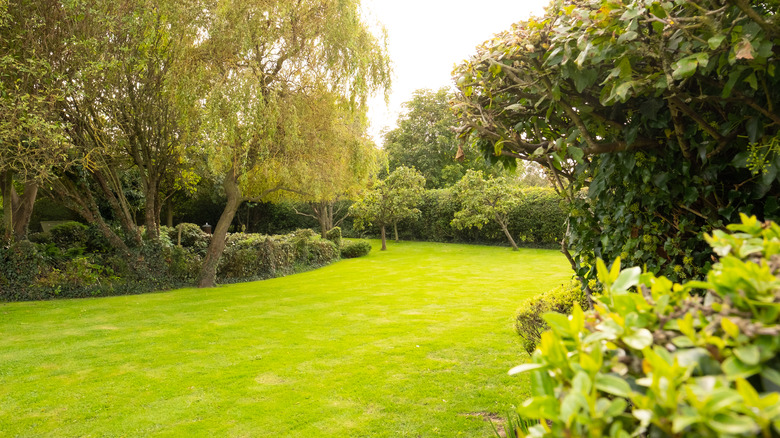We've Got The Secret To Healthy St. Augustine Grass
A vibrant lawn of green St. Augustine grass is such a sight that one might think it's only possible by hiring a magical groundskeeper. Luckily for us mortals, we've got the secret to healthy St. Augustine grass, and you don't need a green thumb to be successful. Growing and maintaining St. Augustine grass requires a routine regimen of deep watering, fertilization, and mowing. The real trick to a healthy lawn is understanding what your specific type of grass needs to thrive — different grass, like all plants, flourishes in specific conditions.
St. Augustine is a humidity-defying grass popular in the Gulf states for its ability to tolerate high temperatures. However, it still requires regular deep watering to grow strong roots. The grass also needs a nutritious, nitrogen-packed fertilizer to promote healthy growth before you cut it at an appropriate height. Routine yet infrequent lawn mowing is the easiest way to ensure it grows in thick, healthy, and rich blue-green.
The tricks to healthy and gorgeous St. Augustine grass
You can enjoy thick and healthy St. Augustine grass by employing the right mowing schedule, watering regimen, and fertilizer combination. Knowing when to mow will allow your grass ample time to develop its root system. Deep and strong roots are better at absorbing nutrients from the soil. Cutting once your grass reaches about four inches in height will ensure the grass is properly rooted.
St. Augustine grass requires infrequent watering to establish roots, but you should water it at least once a week to maintain its vibrant color — you may find that hotter temperatures call for more frequent watering. To check the moisture levels of your grass, inspect the soil. Dry soil indicates that the water has already been absorbed or evaporated in the sun, so be sure to routinely monitor your soil for signs of low moisture.
Much like watering and providing ample sunlight, fertilizing St. Augustine grass is necessary to ensure it receives the required nutrients to thrive. St. Augustine grass requires a fertilizer with a 3-1-2 ratio of nitrogen, phosphorus, and potassium. Fertilizing should be done twice during the growing season that runs from May to July. Adding an iron soluble to your soil in between fertilizing will enhance the color but will not promote new growth. That way, you can appreciate healthy and green St. Augustine grass without worrying about overgrowth.

